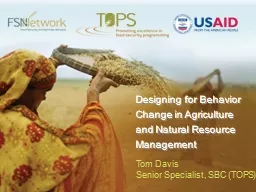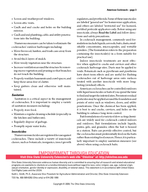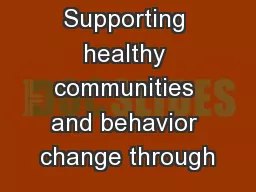PPT-Designing for Behavior Change in Agriculture and Natural Re
Author : giovanna-bartolotta | Published Date : 2016-03-26
Tom Davis Senior Specialist SBC TOPS Designing for Behavior Change Training A practical behavioral framework that aids food security implementers in planning their
Presentation Embed Code
Download Presentation
Download Presentation The PPT/PDF document "Designing for Behavior Change in Agricul..." is the property of its rightful owner. Permission is granted to download and print the materials on this website for personal, non-commercial use only, and to display it on your personal computer provided you do not modify the materials and that you retain all copyright notices contained in the materials. By downloading content from our website, you accept the terms of this agreement.
Designing for Behavior Change in Agriculture and Natural Re: Transcript
Download Rules Of Document
"Designing for Behavior Change in Agriculture and Natural Re"The content belongs to its owner. You may download and print it for personal use, without modification, and keep all copyright notices. By downloading, you agree to these terms.
Related Documents














